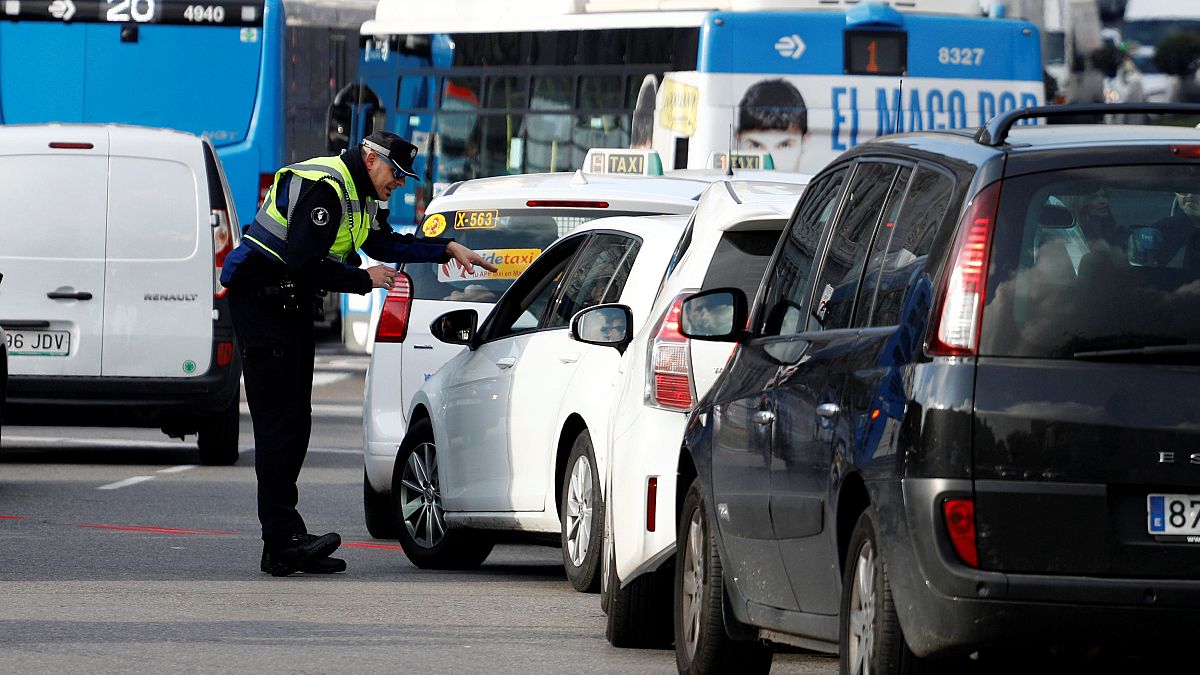Madrid has introduced a ban on cars from entering a designated area in the city centre in a push to curb air pollution.
Madrid has taken a major step towards improving air quality in its city centre.
The Spanish capital on Friday introduced a series of measures that ban some cars from entering a specified area within the city in a push to curb greenhouse gas emissions.
The measure, introduced by Madrid's leftist mayor Manuela Carmena, has made an area of 472 hectares within the city centre off-limits to cars not belonging to residents or public transportation.
All other vehicles will only be able to enter this area if they carry an environmental label and are left in a public parking lot.
The measure is part of the Plan A of the Air Quality project, which also limits the circulation of old car models that pollute at a higher level.
The initiative, backed by the European Commission, was introduced for public health reasons and aims to reduce pollution by 40% in the area — the limit required by the Commission’s Air Quality Directive.
According to an interactive map, created by the European Environment Agency (EEA) and the Commission last year, which shows air quality levels in real-time, Spain fell in the "very poor" category for PM2.5 levels — found in vehicle and industrial emissions.
And Madrid is not the only European city seeking to tackle the issue.
Four others are have sought to limit traffic congestion and pollution by introducing fees to access the city centre.
European cities that have introduced congestion charges
London
Most vehicles operating within the congestion charge zone in central London have to pay £11.50 (€12.91) daily from Monday to Friday.
Stockholm and Gothenburg
Two Swedish cities, Stockholm and Gothenburg, also have a system of congestion taxes that apply to cars in and out of Sweden.
If the car is registered within Sweden, the payment is automatic, meaning it suffices to drive through a toll station and the receipt is sent to the owner of the car.
If the vehicle is from abroad, the Swedish Transport Agency identifies the owner of the vehicle and sends an invoice to that person.
Milan
In Italy, Milan has a congestion charge active in its city centre called Area C. It designates the traffic restricted zone called ZTL.
Cameras detect the type of vehicle entering the area and transmits the data to a computerised system, which matches the car with the tariff.
Valletta
Malta’s capital, Valletta, also introduced a system of congestion charges to reduce traffic, parking problems, and pollution, particularly in the high tourism season.
What are other European cities doing to reduce traffic congestion?
Rome has various zones where traffic is limited but is thinking of introducing other measures to lower traffic congestion. Whereas Berlin launched an "environmental zone" in which only low-emission vehicles are allowed in.
In Paris, the mayor's office has closed down some streets to vehicles to make them into pedestrian-only areas.
Local reactions
Not everyone in Madrid was happy with the ban on Friday.
Carmena's plan has mainly been criticised by members of Spain's conservative People's Party (Partido Popular or PP).
David Perez Garcia, a People's Party MP compared it to the Berlin Wall.
